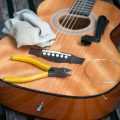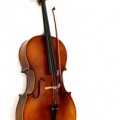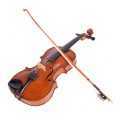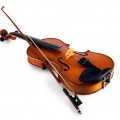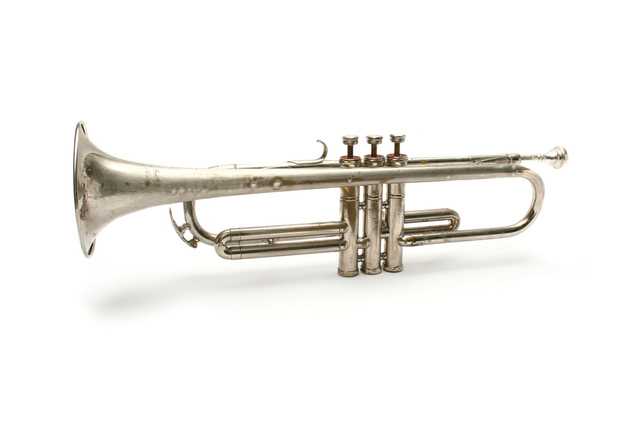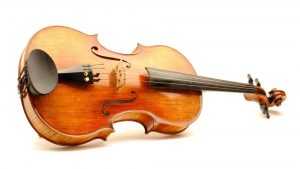 For beginners and professionals alike, it is important to know the basics about viola maintenance to keep your instrument sounding its best. Just like a car requires regular oil changes and tune-ups, your viola also needs special attention and adjustments to ensure that it will be making music with you for years to come. Here are a few viola maintenance tips to help get you started:
For beginners and professionals alike, it is important to know the basics about viola maintenance to keep your instrument sounding its best. Just like a car requires regular oil changes and tune-ups, your viola also needs special attention and adjustments to ensure that it will be making music with you for years to come. Here are a few viola maintenance tips to help get you started:
Cold Weather Cautions
As crisp fall days transform into frosty nights, this time of year presents several challenges when it comes to taking care of a fine instrument. The organic materials that make up a viola cannot evade the reality of physics; they expand when heated and contract when cooled. For this reason, it is incredibly important to keep your viola in a climate controlled area at all times. For instance, if you leave—or happen to forget—your viola in your car on a cold day, it can literally pull apart at the seams, as the cold wood contracts and pulls on the adhesive, jeopardizing the instrument’s structural integrity. If you hear any unusual buzzing coming from your viola, this can also be a sign of a cold-induced open seam that should be examined by a trusted violin shop as soon as possible.
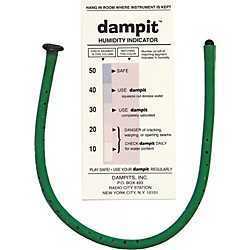 Since cooler temperatures also cause dry air conditions, proper humidification is an additional consideration this time of year when it comes to viola maintenance. To avoid open seams, cracks, and warping, use a humidifier to keep your viola safe and sounding its best. There are a variety of options available, such as humidifiers from Oasis and Stretto that are designed to fit in your case or products like the Dampit, a green snake-like tube that rests in your viola’s F Holes. It is also wise to store your instrument in a room that is properly humidified for a more consistent climate.
Since cooler temperatures also cause dry air conditions, proper humidification is an additional consideration this time of year when it comes to viola maintenance. To avoid open seams, cracks, and warping, use a humidifier to keep your viola safe and sounding its best. There are a variety of options available, such as humidifiers from Oasis and Stretto that are designed to fit in your case or products like the Dampit, a green snake-like tube that rests in your viola’s F Holes. It is also wise to store your instrument in a room that is properly humidified for a more consistent climate.
In general, if a temperature—either hot or cold—is a cause for your discomfort, it is also not good for your viola and proper precautions should be followed.
Adjustments
Every so often, it is important to have your viola adjusted by a respected luthier. It is most advantageous to have this done during seasonal transitions when instruments are at their most volatile. During an adjustment, a luthier will check your viola for open seams, inspect the sound post, and look at the condition and placement of the bridge. If needed, this initial examination will identify any additional viola maintenance work that needs to be done. For instance, replacing the sound post is a common procedure that has significant benefits for the overall sound quality of your instrument. If you report that your viola has an unusually bright D string, a luthier can also adjust the placement of a pre-existing sound post to even out the sound of unbalanced strings. This kind of routine adjustment enhances the playability, responsiveness, and tone of your viola, ensuring that it is sounding the best that it possibly can.
Keeping it Clean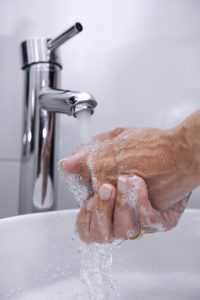
At least once in your life, you have probably been told to wash your hands before you eat, and the same is true for every time you pick up your viola. While this indisputable wisdom is practical from the perspective of sanitation, it also has implications for the sound and longevity of your instrument. The coating of varnish that covers the instrument serves more than an aesthetic function—it also protects the wood from damage and influences the instrument’s sound. Even the natural oils in your skin can harm the varnish, so residue from foods and other contaminants can cause even more significant wear and tear. For this reason, make a habit of washing your hands before each practice session and only touch the body of your instrument where it is absolutely necessary. Additionally, it is important to regularly clean the rosin dust from your viola, as the accumulation can also deteriorate the varnish. Keep a cleaning cloth in your case and remember to dust off your instrument after each time you play.
Strings
Sooner or later, your viola’s strings will need to be replaced. Strings should be replaced about once a year for beginning students and every 4-6 months for advanced and pre-professional students. In addition to producing a dull sound, old strings also have the tendency of going false, or in other words, they lack a clear tonal center that makes it difficult to play in tune. Also, if you notice that a string is fraying or beginning to unravel, it is definitely time to change the string. This most commonly occurs on or near the bridge but can happen anywhere along the string. Finally, wiping the rosin from your strings after each time you play will help ensure that they are sounding their best.
The Bow
Naturally, the bow is an essential part of any well-maintained viola set-up. Just like a wind instrumentalist or singer’s breath support, the bow is a critical consideration in a violist’s sound production. There are three basic—yet incredibly important—things to know about taking care of your bow:
Never touch the h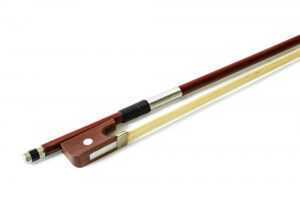 orse hair. The natural oils and any dirt that might be on your hands will ruin the hair so that it no longer produces sound. When the hair absorbs residue from your hands, rosin can no longer be applied effectively. Since it is the stickiness of rosin that allows for what would otherwise be smooth horse hair to draw a sound from the viola, keeping the hair free of oil and dirt is of vital importance.
orse hair. The natural oils and any dirt that might be on your hands will ruin the hair so that it no longer produces sound. When the hair absorbs residue from your hands, rosin can no longer be applied effectively. Since it is the stickiness of rosin that allows for what would otherwise be smooth horse hair to draw a sound from the viola, keeping the hair free of oil and dirt is of vital importance.
Always, always, always loosen after playing. This releases the tension of the bow, preventing the wood from warping.
Do not over rosin! When it comes to rosin application, be mindful of how much you actually need to make your instrument speak. To check if you are using too much rosin, try gently bouncing your bow on an open string. If you can see rosin dust flying in to the air, you have too much rosin on your bow. Using a cloth, be sure to clean away any residual rosin that is left on the bow stick after you are done playing each day.
By following these viola maintenance tips, you can ensure that you are getting the most out of your equipment, so the only thing left for you to worry about is proving all of those viola jokes wrong—practice, practice, practice!


